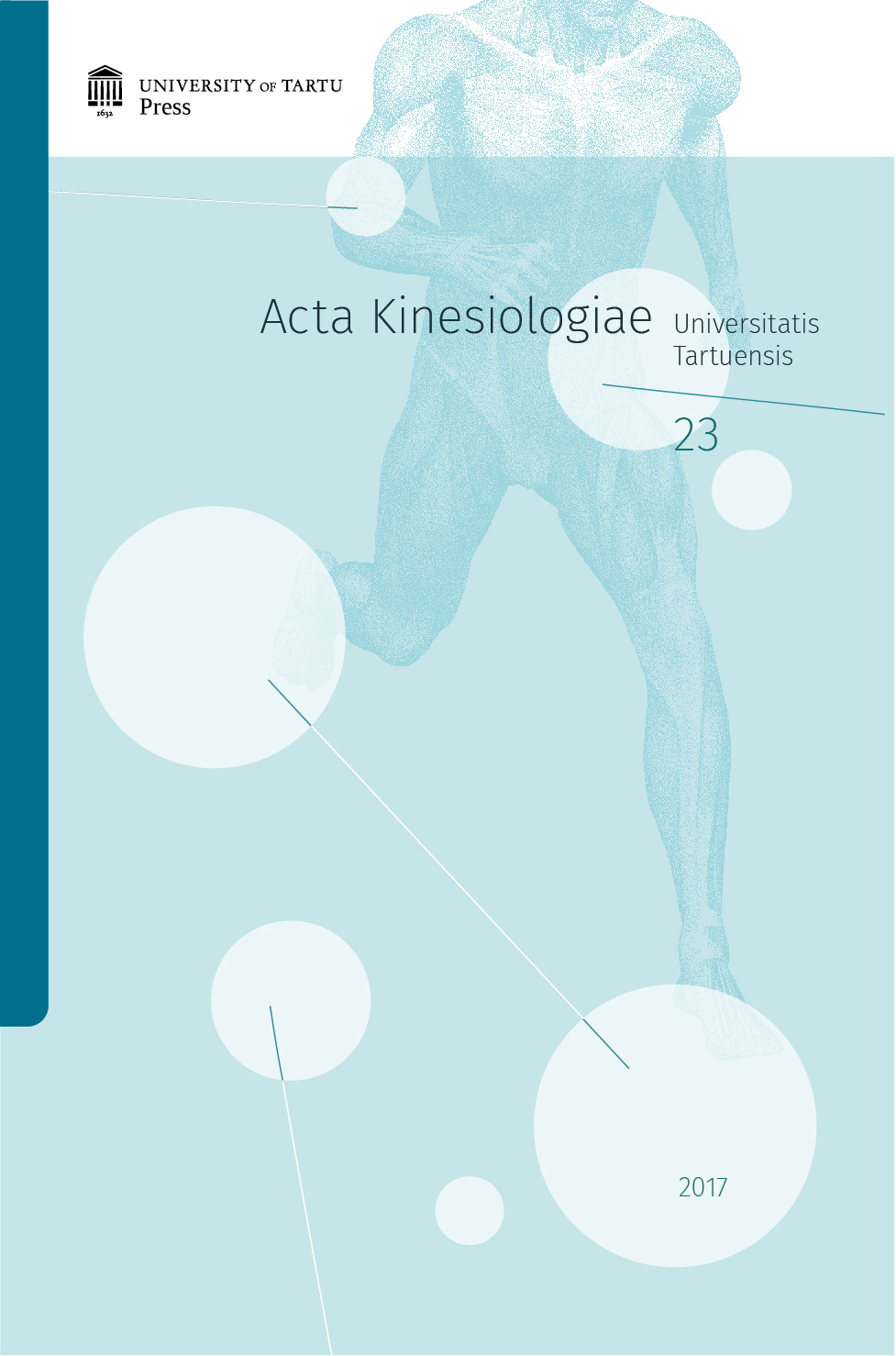Motor performance in patients with knee osteoarthritis after 8-week home exercise program
DOI:
https://doi.org/10.12697/akut.2017.23.07Keywords:
knee osteoarthritis, QF muscle isometric strength (MVC) force, HM muscle MVC force, gait, home exercise programAbstract
On patients with knee osteoarthritis (OA) the muscle strength, gait and everyday activities performance capacity decreased, though patients care started many years before. Patients care includes supervised physio therapy sessions and home exercise performing. Research goal was to assess the improvement in patients with knee OA motor performance with home exercise program (HEP) 8-weeks before total knee arthroplasty (TKA). Hypothesis: 8-week HEP improve legs motor performance in patients with knee OA. Ten female patients with knee OA with the mean (±SE) age of 62.7±2.3 yrs; ten age- and gender-matched healthy controls with the mean (±SE) age of 62.6±1.1 yrs. Motor performance was assessed by isometric strength of the quadriceps femoris (QF) and hamstring (HM) muscles, gait, Five-Time-Sit-to-Stand (FTSTS) test and knee active range of motion (aROM) before and after 8-week HEP. Outcome was measured by Western Ontario and McMaster Universities Osteoarthritis Index (WOMAC). After 8-week HEP, QF and HM isometric strength, knee aROM during flexion and the gait stride length for the involved leg increased (p<0.05) compared to pre-exercising level. The WOMAC score increased and FTSTS test time shortened (p<0.05) after 8-week HEP. Difference in measured parameters between the patients involved leg decreased as compared to uninvolved leg and controls. Study showed that after 8-week HEP improved involved leg thigh’s muscle strength, knee aROM, and stride length. Sit to stand test performance and patient’s self-assessed condition improved. In conclusion, HEP with at least 8 weeks should be recommended for patients with knee OA before TKA.Downloads
Download data is not yet available.


